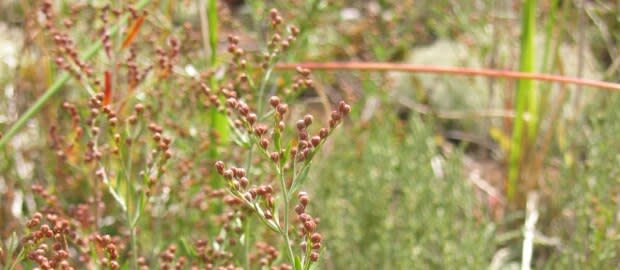Only in Canada, you say? P.E.I. has 7 of this country's unique species
The Nature Conservancy of Canada and NatureServe Canada have released a new report identifying the country's endemic species, seven of which are found on P.E.I.
The report's 308 plants and animals are uniquely Canadian and not found anywhere else in the world, including P.E.I.'s north shore, which the report calls a "hot spot."
"These are species, as the title of the report said, they really are ours to save," Nature Conservancy of Canada national conservation biologist Dan Kraus told CBC Radio: Island Morning's Mitch Cormier.
"The complete responsibility for their survival or their extinction is up to Canadians."
None of the seven species is unique to P.E.I., as they are also found in other Maritime provinces. Five of the seven are plants, including the Gulf of St. Lawrence aster, Gulf of St. Lawrence beach pinweed and Fernald's serviceberry, which is very rare but has been found on the Island.
A 2015 survey found that while the Gulf of St. Lawrence beach pinweed population had remained stable, the plants have been negatively affected by storm surges, which have caused erosion in the sandhills.
One of the species on P.E.I. is the salt marsh copper, a small butterfly which lives in salt marshes.
"This little butterfly's complete distribution on the planet is restricted to about 25 sites including Prince Edward Island, New Brunswick, Nova Scotia and a little bit in Quebec," said Kraus.
"This is a species that's of national conservation concern, but because it only lives in Canada and nowhere else in the world, it's also of global conservation concern as well."
'We can take direct action'
The report also identified eight Canadian species that are now extinct including the Labrador duck, which lived in Eastern Canada and was last seen more than 100 years ago.

"Ask the average Canadian to name an endangered species and they're probably not going to name the salt marsh copper, they're going to name something from another country," Kraus said.
"We need to know about the fate of biodiversity in other countries, but these are species where we can take direct action to protect them. They really are our piece of the global biodiversity puzzle."
Kraus said solutions lie in increasing conservation efforts, including in coastal habitats.
"The species that live on the coast may be vulnerable to climate change, particularly with rising sea levels," he noted. "We can create protected areas. That's something the Nature Conservancy of Canada has been focusing on, trying to protect these species."
More from CBC P.E.I.

